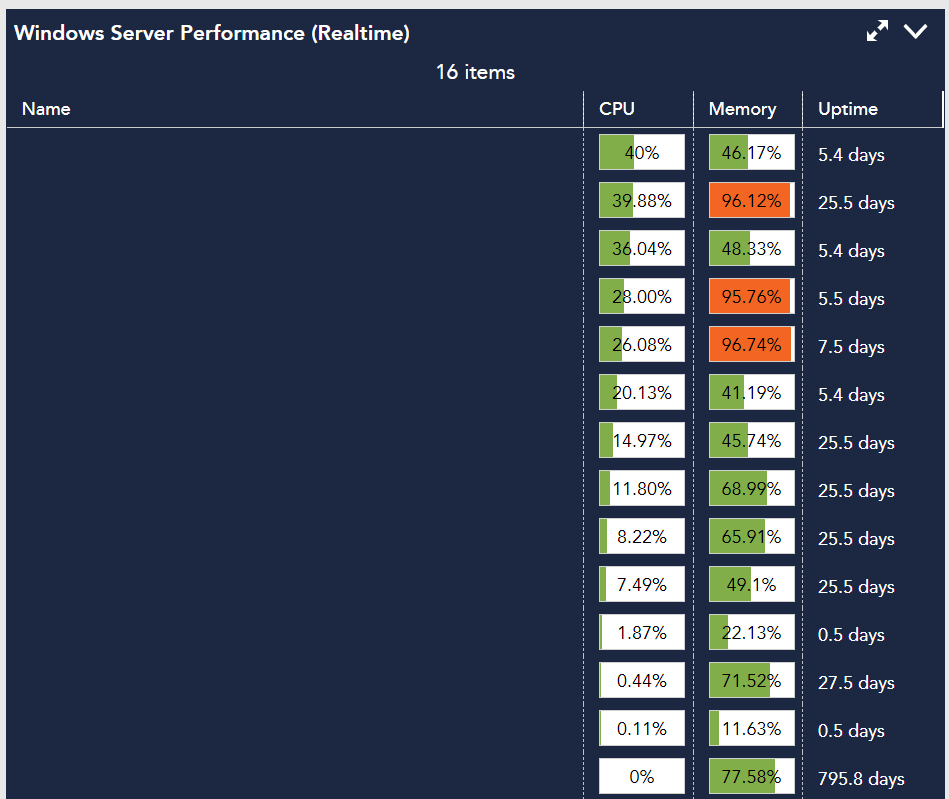ldoodle Advisor
Advisor
2 years ago Advisor
AdvisorFilter widget based on datapoint values
Hi,
I suppose following on from my other message about combining CPU and memory in the same table widget, can these widgets be filtered - not dynamic/on demand but statically?
Take this example - can I have another table that only shows, for example, resources whose CPU OR Memory OR Uptime is beyond a certain threshold, e.g. ‘where CPU > X OR Memory > Y OR Uptime > Z’

Then expanding on that, I’m aiming for a dedicated dashboard highlighting ‘at risk’ or ‘concerning’ resources, so ideally this filter could be done at the dashboard level (e.g. with a ‘filter’ token) resulting in widgets on that dashboard inheriting the filter.
Thanks